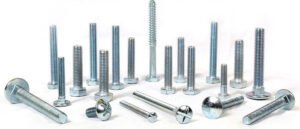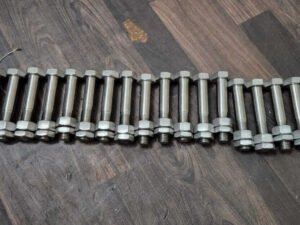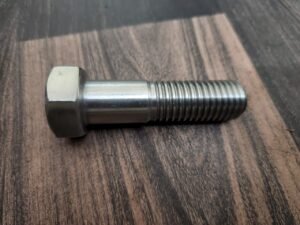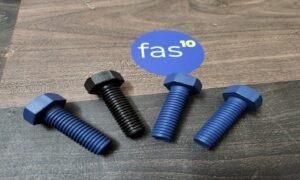
When discussing stainless steel, SS 304 (18-8) and SS 316 (often referred to as 18-10) are two common grades often used in numerous industries for their great corrosion resistance and adaptability. Although these two grades have some similarities, there are significant discrepancies between SS 304 and SS 316 in their composition and how they perform in corrosive conditions. It is vital to comprehend these distinctions to select the ideal stainless steel for specific purposes.
| SS 304 (18-8 Stainless Steel) | SS 316 (18-10 Stainless Steel) | |
| Chemical Composition | 18% Chromium, 8% Nickel, Low Carbon (max. 0.08%) |
16-18% Chromium, 10-14% Nickel, Molybdenum (2-3%) for improved corrosion resistance
|
| Corrosion Resistance | Good general corrosion resistance |
Excellent resistance to corrosion in a wide range of environments including marine environments
|
| Temperature Resistance | Suitable for high-temperature applications up to about 870°C |
Higher temperature resistance due to molybdenum content
|
| Strength | Relatively high tensile strength and yield strength |
Slightly higher tensile strength than SS 304
|
| Weldability | Excellent weldability |
Good weldability, but may require more attention due to increased tendency to form carbides
|
| Applications | Used in various industries including food and beverage, chemical, pharmaceutical, and more |
Commonly used in marine environments, pharmaceuticals, medical devices, coastal structures, and more
|
| Cost | Generally less expensive than SS 316 |
Slightly more expensive than SS 304, due to higher nickel and molybdenum content
|
| Machinability | Easy to machine and work with |
Slightly more difficult to machine than SS 304
|
| Appearance | Bright, reflective surface |
Similar appearance to SS 304, but with slightly enhanced corrosion resistance
|
SS 304(18-8 Stainless Steel)
SS 304 is a commonly used stainless steel alloy, recognized as 18-8 Stainless Steel. It is made up of 18% chromium and 8% nickel, called “18-8”. It offers a few advantageous qualities that make it suitable for various uses.
Firstly, SS 304 has efficient corrosion protection in various environments, like atmospheric conditions and mildly acidic or alkaline environments. It has a great level of oxidation immunity and is tough enough to be exposed to high temperatures. SS 304 has remarkable resistance to pitting and crevice corrosion, making it practical for marine and seaside applications.
In addition, SS 304 displays good strength, resistance, and great formability. It is very easy to bend and shape, making it suitable for various manufacturing processes. Additionally, SS 304 is preferred due to its hygienic characteristics, making it the perfect choice for manufacturing food processing equipment and kitchen appliances.
Pros of SS 304 (18-8 Stainless Steel):
- Good corrosion resistance in various environments.
- Excellent pitting and crevice corrosion resistance.
- High strength and toughness.
- Good formability and easy fabrication.
- Suitable for architectural, automotive, and general-purpose applications.
- Relatively lower cost compared to some other stainless steel grades.
Cons of SS 304 (18-8 Stainless Steel):
- Limited resistance to highly corrosive environments.
- It may exhibit some sensitivity to chloride ions.
- Lower nickel content compared to other stainless steel grades.
- Not as heat resistant as some higher-grade alloys.
- Not ideal for extreme temperature and pressure conditions.
- It may require regular maintenance to prevent surface discoloration or staining.
- It may not provide optimal performance in highly specialized or demanding applications.
SS 316(18-10 Stainless Steel)
18-10 Stainless Steel, more commonly referred as SS 316, is an alloy composed of between 16 and 18% chromium and 10 and 14% nickel. This austenitic stainless steel grade is known for its impressive corrosion resistance and exceptional mechanical properties.
Additionally, SS 316 exhibits outstanding pitting resistance, making it highly resistant to localized corrosion. It also possesses excellent crevice corrosion resistance and is less prone to stress corrosion cracking than other stainless steel grades.
SS 316 maintains its strength and toughness even at elevated temperatures, making it suitable for high-temperature applications. It offers good formability and weldability, allowing for easy fabrication and installation.
Pros of SS 316 (18-10 Stainless Steel):
- Excellent corrosion resistance in various environments, including marine and chloride-containing environments.
- Superior pitting and crevice corrosion resistance compared to SS 304.
- Exceptional resistance to stress corrosion cracking.
- Good strength and toughness, even at elevated temperatures.
- Suitable for high-temperature applications.
- Good formability and weldability, allowing for easy fabrication.
- Ideal for industries requiring high levels of corrosion resistance, such as chemical, pharmaceutical, and marine industries.
Cons of SS 316 (18-10 Stainless Steel):
- Relatively higher cost compared to SS 304.
- Contains a higher nickel content, which can contribute to its higher price.
- Not as readily available as SS 304 in certain regions or markets.
- It may not be necessary for applications that do not require the enhanced corrosion resistance provided by SS 316.
- It may require proper maintenance to prevent surface discoloration or staining in certain conditions.






